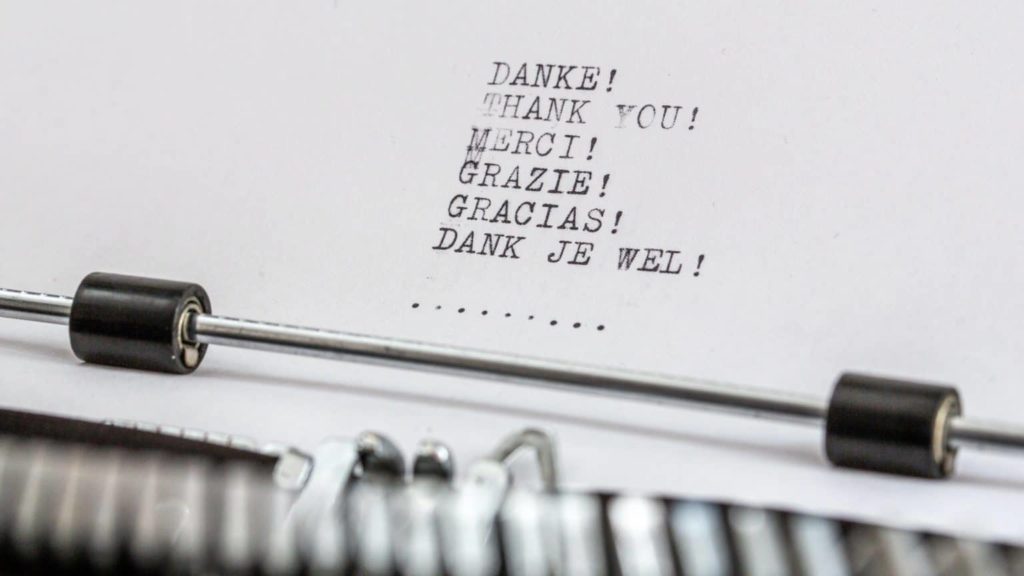Why Your Organization Should Foster a Culture of Appreciation

Maintaining team well-being is an essential quality of any effective L&D leader.
Maintaining team well-being is an essential quality of any effective L&D leader. By developing a culture of appreciation in the workplace, individuals gain a sense of belonging that allows them spark creativity, hone in on innovation and provide valuable insights to their team members. While leaders may feel that they are expressing their gratitude to team members, individuals tend to prefer unique ways of giving and receiving appreciation that may not be perceived as intended if L&D leaders are not conscious of all styles. Through our work with various clients, we have seen the importance of developing a culture of appreciation first-hand and provided this quick guide for L&D leaders to address team members’ differing appreciation styles.
Understanding a Culture of Appreciation
The first step in developing a culture of appreciation is understanding the concept at a granular level. In his article published by Forbes Magazine, “How to Create a Culture of Appreciation in your Team,” investor and software expert Thomas Griffin defines a culture of appreciation as “an effective way to develop emotional connections between your employees and your company, which in return can motivate them to stay loyal and dedicated to the company culture.” In other words, a culture of appreciation is ensuring that team members feel welcome in their work environments. Whether it is mutual trust amongst team members, acknowledgment by team leaders or a general sense of belonging, this foundation builds a workplace that all members would like to be a part of and thrive in.
Why it Matters
Team members identify company recognition as one of the key motivators in going above and beyond and remaining an integral part of an organization. As an L&D leader, ensuring that every voice on the team feels heard makes for a better team overall. When people feel appreciated, creativity and collaboration can flow, which helps the business thrive internally and externally. Ensuring that the workplace is somewhere that everyone wants to be boosts company morale, retention rate, and, in turn, can increase company success.
Methods to Express Appreciation
While many L&D leaders express their appreciation, many also struggle to express this recognition in ways that are well-received by all team members. At WDHB, we explore 4 styles of showing appreciation at work, inspired by The 5 Love Languages ® by Dr. Gary Chapman, to motivate leaders to enact these changes into their leadership and put it into practice with their teams:
Words of Affirmation
Words of affirmation are one of the key ways employees give and receive appreciation. Identifying and providing words – written or spoken – to build team motivation occur in a variety of forms:
- Giving praise on a team project’s success
- Giving acknowledgment to a team member’s hard work
- Providing reassuring words during a time of difficulty
- Sending a handwritten card
Quality Time
Quality time in the workplace is an easily achievable, yet oftentimes misunderstood style. Most likely the number one method impacted by remote offices, quality time can be expressed in several creative ways. This appreciation can be expressed through time commitment to team members by:
- Making an effort to understand team members’ goals
- Listening and showing interest in ideas
- Reading work and reports individuals have completed
- Dedicating personal bonding time inside and outside of work
Receiving Gifts
Receiving gifts in the workplace can range from small sentiments to larger acts of appreciation. Gift- giving and gift-receiving could be achieved through many avenues that show an understanding of an individual’s character inside and outside of work:
- Providing a gift certificate
- Giving a thoughtful gift—a desk plant, mug, picture frame
- Paying for a meal or coffee
- Rewarding a bonus
- Offering an opportunity within the company—promotion, new project or responsibility
Acts of Service
Providing acts of service are what teamwork is all about. This language of appreciation is achieved through taking accountability and providing recognition of team members’ responsibilities:
- Helping an individual on a project
- Giving support to them on an individual project
- Offering past research gathered for a team member’s new project
- Assisting a team member in brainstorming ideas
The Results
WDHB strives to inspire a continuous culture of appreciation amongst L&D leaders and their teams for many reasons, including ensuring their companies’ inclusivity and productivity. Through an awareness of these appreciation styles, leaders have the potential to inspire positive work environments that spark innovation and return on investment for an organization’s greatest asset – its people.
Sources:
Author
Subscribe to get Access to Exclusive Content





